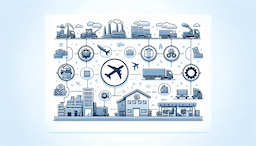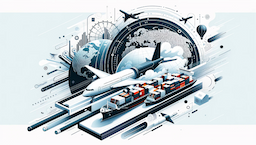Clearing goods in logistics refers to the process of ensuring that imported or exported goods are legally authorized to enter or exit a country, and that they meet all regulatory requirements. This process can be complex, as it involves a variety of stakeholders, including shippers, customs officials, and freight forwarders, and can be subject to a range of regulations and procedures. In this article, we will outline the steps involved in clearing goods in logistics.
Preparing Shipping Documents
Before goods can be cleared for shipment, a range of documents must be prepared, including commercial invoices, packing lists, bills of lading, and any necessary licenses or permits.These documents must be accurate and complete, as any errors or omissions can delay the clearance process or result in fines or penalties.
Arranging Transportation
Once the necessary documents have been prepared, the next step is to arrange transportation for the goods. This can involve selecting a carrier or freight forwarder, negotiating rates, and coordinating the movement of goods from the point of origin to the destination. It is important to ensure that the carrier or freight forwarder is reputable and has experience in handling the specific type of goods being transported.
Submitting Customs Declarations
Prior to the arrival of the goods at their destination, customs declarations must be submitted to the relevant authorities. This typically involves providing detailed information about the goods being shipped, including their value, country of origin, and intended use. Depending on the destination country, additional information or documentation may be required, such as product safety certifications or import licenses.
Completing Customs Inspections
Once the goods arrive at their destination, they may be subject to customs inspections to ensure that they comply with all applicable regulations. This may involve physical inspection of the goods, as well as review of the accompanying documentation. Any discrepancies or issues may result in delays or additional fees.
Paying Customs Duties and Taxes
If the goods are deemed to comply with all applicable regulations, customs duties and taxes must be paid before they can be released. The amount of these fees can vary depending on factors such as the type of goods, their value, and the destination country. It is important to ensure that all fees are paid in a timely manner to avoid delays or penalties.
Obtaining Clearance
Once all necessary fees have been paid and inspections have been completed, the goods can be cleared for shipment. This typically involves obtaining a release document or other authorization from customs officials. Once the goods have been cleared, they can be transported to their final destination.
Delivering The Goods
Finally, the goods can be delivered to their intended recipient. This may involve coordinating with local transport companies or arranging for pick-up by the recipient. It is important to ensure that the goods are delivered in a timely and secure manner to minimize the risk of damage or loss.
To have a grab knowledge in this field, we Guiders education will provide an opportunity to the students for the industrial visit segment and they will fully acquaint in this field.
In conclusion, clearing goods in logistics can be a complex process, but careful preparation and attention to detail can help ensure a smooth and efficient clearance process. By following the steps outlined above, shippers can minimize the risk of delays or penalties and ensure that their goods are delivered to their final destination in a timely and secure manner.







